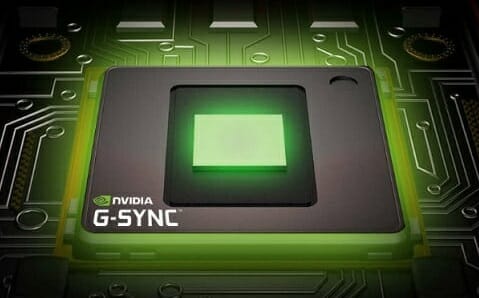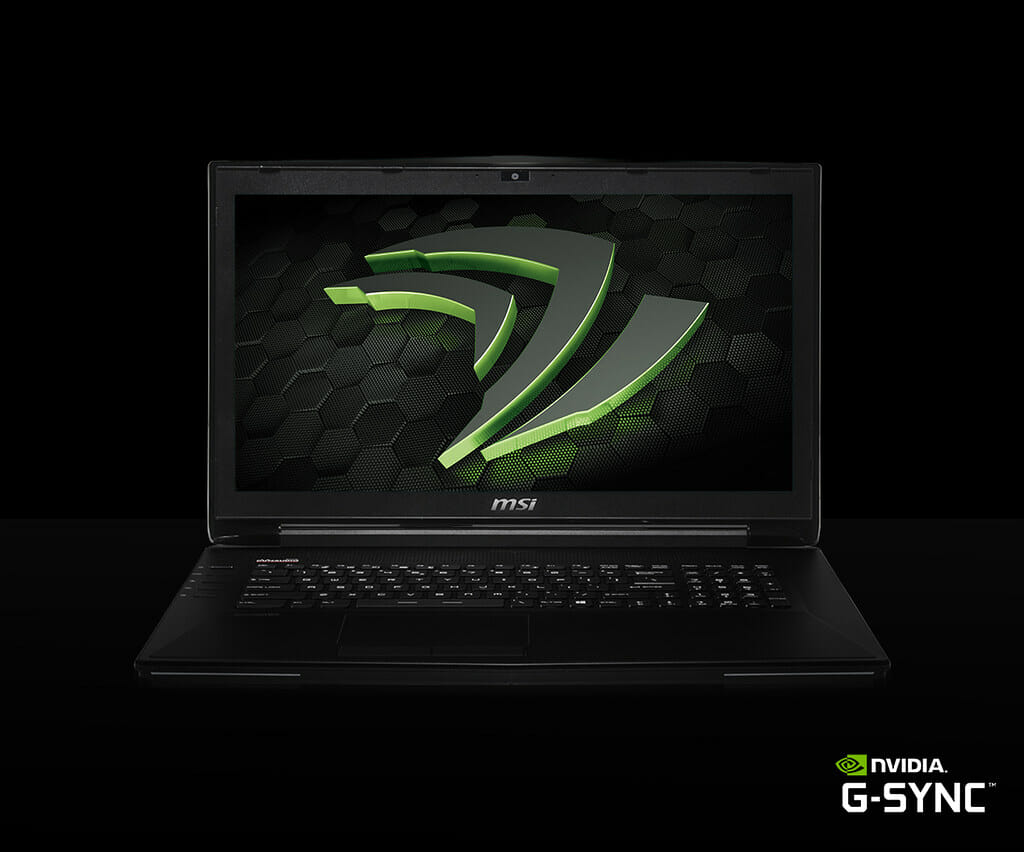Table of Contents
G-Sync technology is an essential feature, especially for gaming monitors. When you want to purchase a gaming monitor, you'll get several screens that advertise the G-Sync technology. Besides the sync feature, G-Sync monitors also come with other features related to gaming, including a high refresh rate and a fast response time. The monitors are also more expensive than their FreeSync counterparts.
G-Sync is an adaptive refresh technology that ensures you enjoy a smooth gaming experience by preventing screen tearing and game stuttering. Therefore, you'll enjoy an immersive gaming experience even when playing fast-paced games like CS:GO.
So, what is NVIDIA G-Sync, and why does it make an expensive monitor?G-Sync by Nvidia in Monitors
NVIDIA's G-Sync technology is an NVIDIA company hardware-based refresh technology. The technology helps deal with game stuttering and screen tearing by syncing your screen's refresh rate and the graphics processing unit's frame rates.
Your monitor's GPU renders frame rates at every second. The variety of frame rates functioning together offers a smooth motion. At the same time, your monitor refreshes every second and clears the previous image for the subsequent frames that the GPU renders. Your monitor stores upcoming frames in a buffer to help maintain a smooth operation. If the buffer and the refresh rate get out of sync, you'll get two frames stitched together.

V-Sync was the first technology to deal with the sync issue. A software-based feature would force the Graphics Processing Unit to hold the frames in the buffer up to when the monitor refreshes. Although the technology helped deal with the problem of screen tearing, it led to input lag issues. The V-Sync technology forces the GPU (graphics processing unit) to hold rendered frames. The holding leads to a delay between what happens in your game and what displays on your screen.
NVIDIA introduced the Adaptive VSync as the alternative to the V-Sync technology. The technology would prevent screen tearing by locking the frame rate to your screen's refresh rate. In 2013, NVIDIA introduced G-Sync technology, a hardware-based technology.
The technology is the same as the adaptive sync technology by VESA, allowing variable refresh rates on the monitor. Unlike the V-Sync technology that would force the GPU to hold the frames in a buffer, a G-Sync monitor enables the monitor to change the refresh rate based on the frame rates that the GPU renders. Thus, it eliminates screen tearing and input lag.
What Is the Use of the G-Sync Technology?
The G-Sync technology is helpful if you have an NVIDIA GPU and want a monitor with a high refresh rate. Most G-Sync compatible monitors have a refresh rate of 144Hz or 240Hz. When looking for G-Sync compatible displays, one thing you'll notice is that the monitors are consistently expensive.
First, the hardware is hardware-based. As such, you require a proprietary NVIDIA scaler module installed on the G-Sync display. NVIDIA has a monopoly on G-Sync, and it ensures it is implemented well and works flawlessly on every G-Sync compatible display.
Is G-Sync a Good Option for Gaming?
G-Sync is an excellent option for gamers looking for incredible performance. As mentioned earlier, G-Sync monitors feature a high refresh rate which offers smooth gaming. However, if the refresh rate doesn't match with the frame rates that the GPU outputs, you'll experience annoying screen tearing and game stuttering.
G-Sync syncs the Graphics Processing Unit's frame rates with your display's refresh rate, eliminating stuttering. Thus, you enjoy a smooth gaming experience.
G-Sync Vs. Ultimate Vs. Compatible
G-Sync is an NVIDIA company hardware solution for dealing with screen tearing issues. Thus, all the certified monitors should include the proprietary NVIDIA board. Most monitor manufacturers now have G-Sync compatible monitors.
NVIDIA has three G-Sync display classes: G-Sync, Compatible, and Ultimate monitors.
G-Sync
- The G-Sync category of monitors includes G-Sync compatible monitors, 24 to 38 inches
- Certified after more than 300 tests
- Validated no artifacts
G-Sync Compatible
- Comprises monitors 24 inches to 88 inches
- Validated having no artifacts
G-Sync Compatible monitors are newer models, and they don't come with the proprietary G-Sync board by NVIDIA. However, the G-Sync technology compatible displays support variable refresh rates. The monitors are mainly under the AMD FreeSync (see 'What is AMD Freesync?') umbrella that doesn't require a proprietary scaler board. The NVIDIA brand tests the monitors to ensure there are no artifacts when the display is connected to Ge-Force GPUs. You can consider the G-Sync Compatible monitors as cheaper alternatives to G-Sync Ultimate monitors.
G-Sync Ultimate
- Comprises monitors 27 to 65 inches
- Certified after more than 300 tests
- They feature 1000 nits of brightness
- It offers the best quality HDR
- Validated no artifacts
Should You Turn On G-Sync?
If you purchase a G-Sync Monitor, the G-Sync technology will be on by default. Otherwise, you'll need to turn it on yourself. How do you put on the G-Sync settings on your PC?
Setting up the software and running it in its ideal form depends on your PC monitor. To make the most out of the sync technology, you can use the following tips:
Check the Specifications of Your Monitor
Before you go to the monitor's settings to enable G-Sync, it'll be best to understand the capabilities of your monitor to ensure flawless performance.
For example, a monitor with a built-in G-Sync chip can use the technology for its entire range of refresh rates. On the other hand, a G-Sync Compatible monitor may be limited.
Additionally, your monitor can only support the sync technology on specific outputs. The DisplayPort input is the best option as it can support more refresh ranges than an HDMI input. You can check the monitor's manual to understand its capabilities and specs range.
Your monitor can also feature other limitations, such as only supporting variable refresh rates when the HDR feature is off. Ensure that your monitor's graphics card also supports variable refresh rates. Also, check if your FreeSync monitor is G-Sync certified. Some displays that aren't NVIDIA certified may work with G-Sync but not meet the standards.
Turn On the G-Sync Technology on Your Monitor
After ascertaining that your display's specs range can support G-Sync, you should continue turning on G-Sync and ensuring it is working. Once you plug in the graphics card on the ideal port, you should continue to set the sync technology up.
You should use the buttons at the back or the side of your monitor to bring the on-screen menu. Ensure that the G-Sync is turned on. Next, ensure that the NVIDIA drivers on your monitor are up-to-date. If updated, right-click on the NVIDIA icon on your desktop and open the NVIDIA control panel.
Go to the Resolution Page on the sidebar and set the refresh rate as high as possible. You may not want to invest the technology on a monitor with a 144Hz refresh rate, only to limit it to 60Hz. Next, go to the sidebar and select the Set Up G-Sync option. The option should be on by default on a G-Sync monitor.
Additionally, you should check the box on the side of the Enable G-Sync option. You should also choose whether you want the option enabled for full screen and windowed modes or full screen only. If you are using multiple monitors for work, ensure you select your device from the list of monitors.

Finally, you should enable the selected display model settings at the bottom of the Window. The checkbox isn't there for all monitors, but you can miss it even when it is there. When you press the Apply button, the G-Sync technology should be enabled on your monitor and ready to start working.
Conclusion
If you are an avid gamer and participate in fast-paced games, G-Sync is a feature you shouldn't ignore. When looking for a gaming monitor, gamers look for various features, including a high refresh rate, fast response time, and low input lag. However, if you are playing a game and the monitor's refresh rate doesn't match the frame rate that the GPU is outputting, you are likely to experience screen tearing and game stuttering.
The G-Sync technology comes in handy in ensuring that the game's frame rate matches with the display's refresh rate to eliminate screen tearing. Thus, you can enjoy a smooth and immersive gaming experience. When enabling G-Sync on your monitor, there are factors you should consider.
First, ensure that the monitor's graphics card supports a high refresh rate. Check all the monitor's specifications to ensure G-Sync can work on the monitor. However, the monitors are expensive due to the proprietary hardware that you need to purchase. If you are working on a budget, you can consider an AMD FreeSync monitor.


